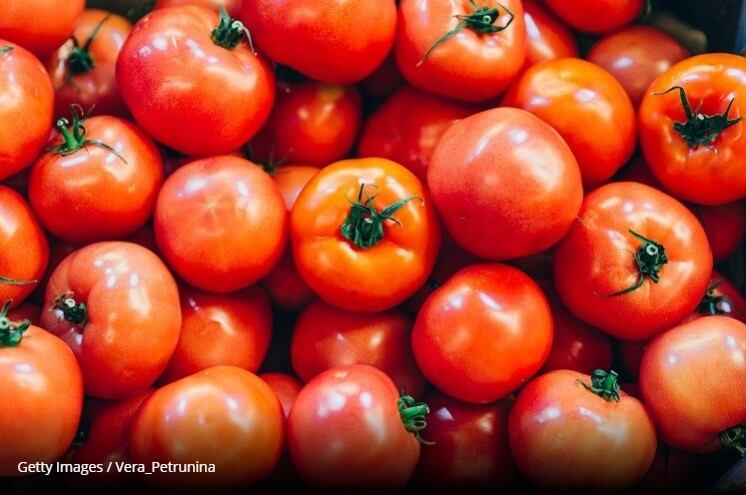The team identifies the NFκB and ARE/Nrf2 transcription factors that play roles in inflammation, cell production, differentiation, and protection, in which the phytonutrients appear to regulate.
“When creating Lycoderm, we were aiming for the ultimate mix of carotenoids naturally present in the tomato alongside the polyphenols in natural rosemary leaf extract,” says Karin Hermoni, Head of Product and Science at Lycored, who also funded the study.
“This research shines a light on how these phytonutrients work together to nourish the body from the inside out, helping to maintain skin health and wellness to achieve an ‘inner glow.’”
The paper, published in the journal MDPI, focuses on a number of experiments that used a carotenoid-rich tomato extract and Lycoderm, the firm’s Tomato Nutrient Complex (TNC) along with rosemary extract.
The TNC contained 6% lycopene, other tomato carotenoids (phytoene 1.5%, phytofluene 0.6%, beta-carotene 0.4%), and additional fat-soluble tomato components such as phytosterols (1.7%) and tocopherols (2.0%).
The main polyphenols in the rosemary extract were carnosic acid (20.2%) and carnosol (2.5%).
Other nutrients used in the experiments included β-carotene, curcumin (>95%), carnosic acid (93–97%) and tetrahydrofuran (THF), containing 0.025% butylated hydroxytoluene as an antioxidant.
Study details
Along with researchers from Israel’s Ben-Gurion University of the Negev, the tests found the phytonutrients in Lycoderm worked to inhibit inflammatory cytokines that degrade skin collagen.
Lycoderm was also found to inhibit the secretion of the cytokines and balance oxidative stress far more effectively than either the tomato extract or rosemary leaf extract alone.
To demonstrate the bioavailability of the carotenoid supplements a group of healthy subjects were enrolled and asked to consume Lycoderm along with their regular diet.
Blood samples were taken two and three weeks after beginning supplementation with findings revealing the average plasma concentration of the major tomato carotenoids almost doubled.
“To understand how phytonutrient combinations, protect the skin, the effect of their combinations on several signalling components that are induced by UV irradiation was evaluated,” the research team comments.
“This includes the NFκB transcription system upon which induction by UV leads to an increase in the level of various inflammatory cytokines, including IL-6 and TNFα that enhance inflammatory responses such as erythema and sunburn.”
Lycopene and β-carotene
A wealth of studies have shown that carotenoids such as lycopene and β-carotene protect skin from UV-induced damage. Polyphenols are another group of phytonutrients with similar action.
The popular view identifies the beneficial effects of phytonutrient mixtures reside, at least partly, on the complementary and overlapping mechanisms of action of these nutrients on several cellular pathways.
Modulation of transcription and gene expression has been found to play a role in phytonutrient effect on cellular processes including the antioxidant defence mechanism and inflammatory processes.
Phytonutrients are active in modulating two particular transcription systems. ARE/Nrf2 system induces genes of antioxidant and detoxifying enzymes that neutralize harmful molecules in the skin,
The NFκB system induces genes that are involved in inflammatory processes and that are deleterious to the skin.
“The main finding of the study was that the combination of carotenoids and polyphenols inhibited UVB-induced release of IL-6,” the paper highlights.
“These combinations caused the opposite effect on ARE/Nrf2, where very strong synergistic activation was evident.
“The correlation between the effects of phytonutrients on the transcription systems (activation of Are/Nrf2 and inhibition of NFκB) and reduction in the damaging effects in the skin cells (IL-6 and MMP1 secretion) suggests a role for modulation of the transcriptional activities in balancing the response of skin cells to UV irradiation.”
Source: MDPI
Published online: doi.org/10.3390/molecules26071931
“Combined Effects of Carotenoids and Polyphenols in Balancing the Response of Skin Cells to UV Irradiation.”
Authors: Glenda Calniquer et al.


